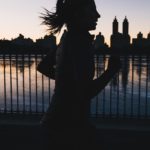 The Covid-19 pandemic has disrupted vast swathes of urban life, with schools and workplaces shut, public transport limited, the throng of tourists gone, and the entertainment that make cities so vibrant largely laying dormant. On the flip side, pollution has been down, and parks have been more active with people taking exercise where they can get it.
The Covid-19 pandemic has disrupted vast swathes of urban life, with schools and workplaces shut, public transport limited, the throng of tourists gone, and the entertainment that make cities so vibrant largely laying dormant. On the flip side, pollution has been down, and parks have been more active with people taking exercise where they can get it.
New research from the University of British Columbia looks at what our cities might look like when we emerge out the other side of the pandemic. The paper highlights the impact the pandemic has had on everything from mobility to energy, green spaces to housing preferences. They accept that many of the changes we’ve seen will be temporary, but some will be more permanent.
“In some cases, cities are accelerating the implementation of changes they had in the works already, such as rolling out planned bicycle infrastructure, street calming projects or sidewalk re-designs. In other cases, planners and neighbours are making things up as they go along, experimenting, testing and relying on low-cost interventions,” they explain.
Changing mobility
Mobility levels have dropped in cities around the world, and the researchers note that mobility associated with recreation and retail in Canada is still about 17% lower than normal levels from January/February.
“Although this rate continues to rise slowly, the reduced pedestrian traffic to-date has already had strong effects on many local businesses, many of which have had to close their doors indefinitely. This trend will likely continue until a viable solution to the pandemic is found,” they note.
In the longer term, they believe that cities are likely to deploy a range of low-cost and temporary measures to calm streets and encourage pedestrians. It might require a degree of redesign of city streets, not least to cope with the rise in home delivery services during the pandemic.
Cities that have traditionally attracted large numbers of tourists are also likely to see a number of enduring changes, as while businesses might continue to struggle for some time, cities are pushing ahead with plans to make themselves more pedestrian friendly.
Greener cities
These are part of wider initiatives to make cities greener, with a more plentiful supply of nature and diversity of recreational possibilities. The authors cite the potential for the vast number of underused rooftops in many cities to be transformed into rooftop gardens, for example.
“Public space might still be a place for social interaction, but it may be more difficult for the spontaneous and informal. The pandemic may limit our ability to develop new relationships, especially among strangers,” the authors suggest.
As with so many aspects of life, however, the pandemic has given us an opportunity to pause and reset, with urban officials given the chance to examine afresh the links between urban planning, public space, and wellbeing.
“Our future city is not preordained, but will be the result of specific decisions about public space,” the authors explain. “We hope citizens will talk to their leaders and come together with planning and policy professionals to build healthier cities during this crisis and beyond.”
Our cities have evolved over millennia based upon dimensions that are far smaller than than the six-foot social distancing protocols that have become a fact of life. This has prompted a rapid adaptation of our urban spaces to try and keep citizens safe.
“Right now, people are attempting to adapt systems, behaviours and built spaces based on three-to-four-foot distances to the larger social-distancing dimensions. The results have been very interesting, showing a lot of creativity and innovation. But it’s also already evident that cities cannot and will not fully change in every respect to allow six-foot distancing. This will continue to evolve as restrictions change,” the authors conclude.